| Travel Photos Home Page |
Travel Photos...Italy 2018
|
||||
|
To return to the Paintings section of this website, please CLICK HERE
|
|||
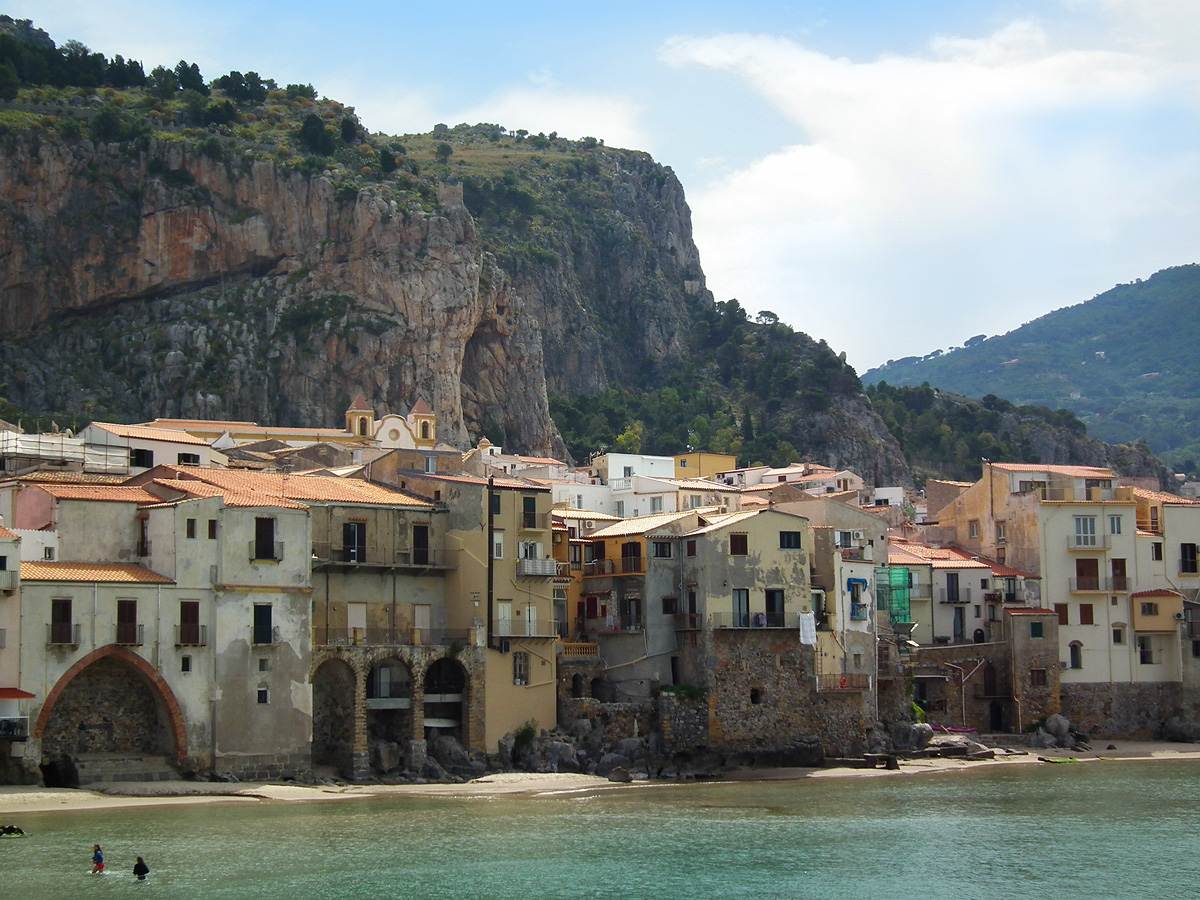 |
|||
| Cefalu is a small town, 70 kms East of Palermo, easily reached by train or bus.
It is dominated by a massive crag called La Rocca, upon which a fortified city was built by the Ancient Greeks. As usual in Sicilian history, Cefalu has had a turbulent past, conquered in turn by Carthaginians, Romans and Arabs. It was King Roger II who was responsible for building the new town on the seashore, which had a good natural harbour. (I have written a bit about the impressive Roger II in the page on Palermo.) Although Cefalu has a population today of only 14,000, it attracts millions of visitors from all over Europe each year. I was there this time in April and managed to avoid the huge crowds which, I am told, can make the narrow streets of Cefalu a bit of a tight squeeze! |
|||
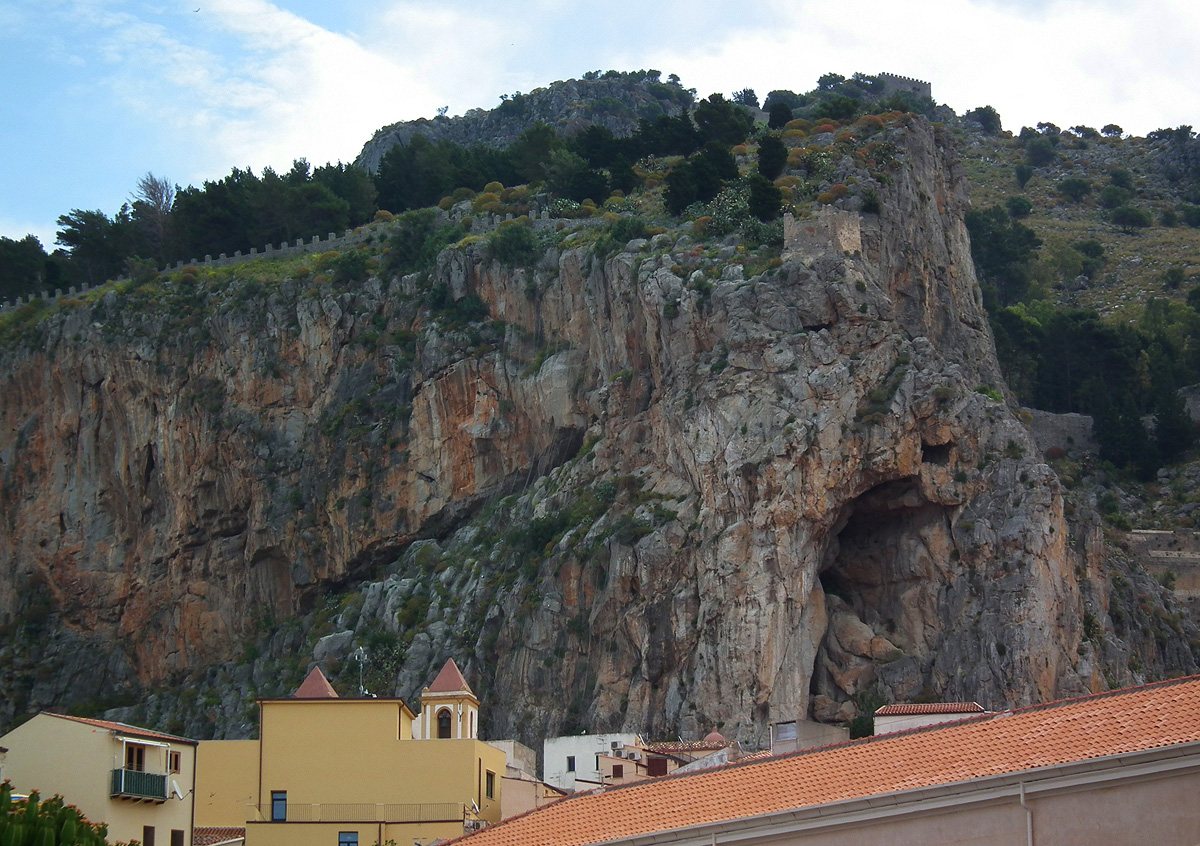 |
|||
| A close up shot of a part of La Rocca. At the bottom right corner there is a giant cave. At the top of the rock you can see traces of the old fortifications. | |||
 |
|||
| The many beaches of Cefalu are part of the attraction for many visitors. It was a bit cold for swimming in mid-April. | |||
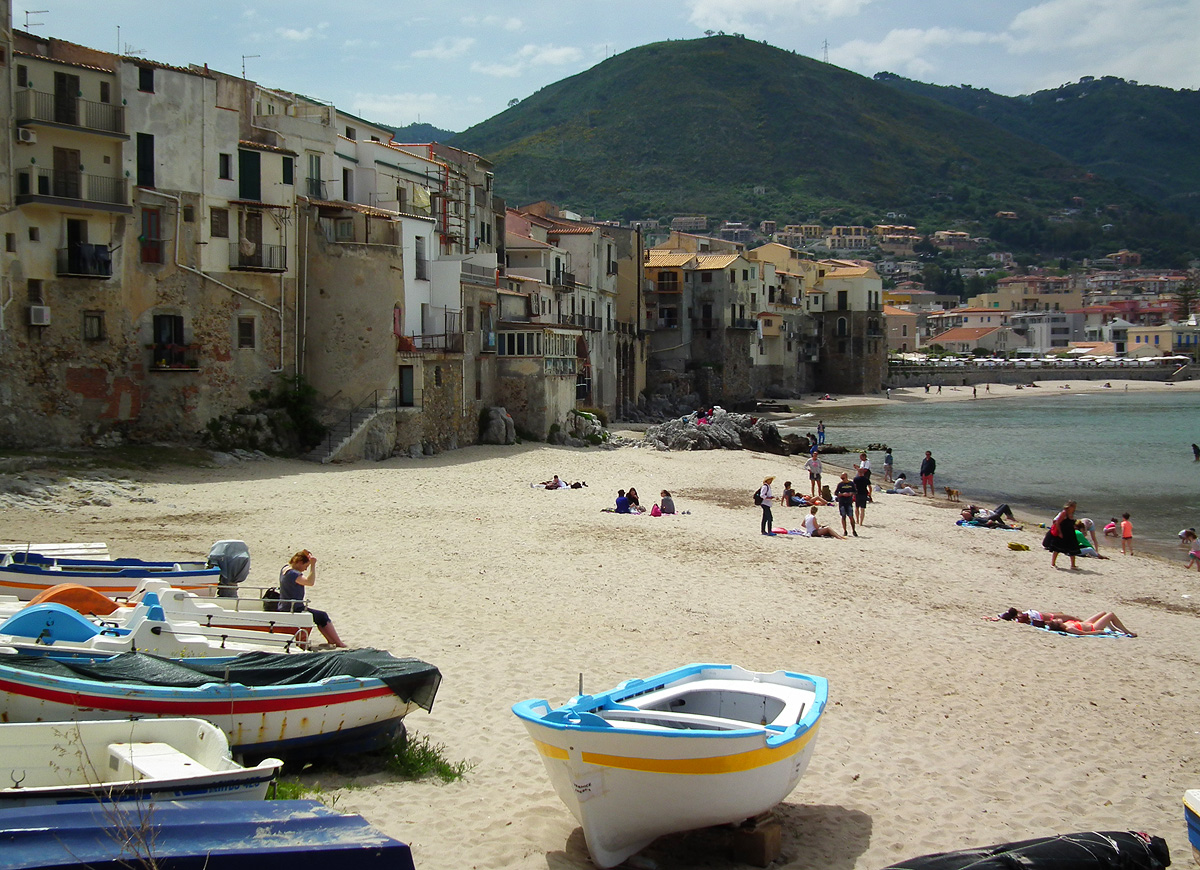 |
||
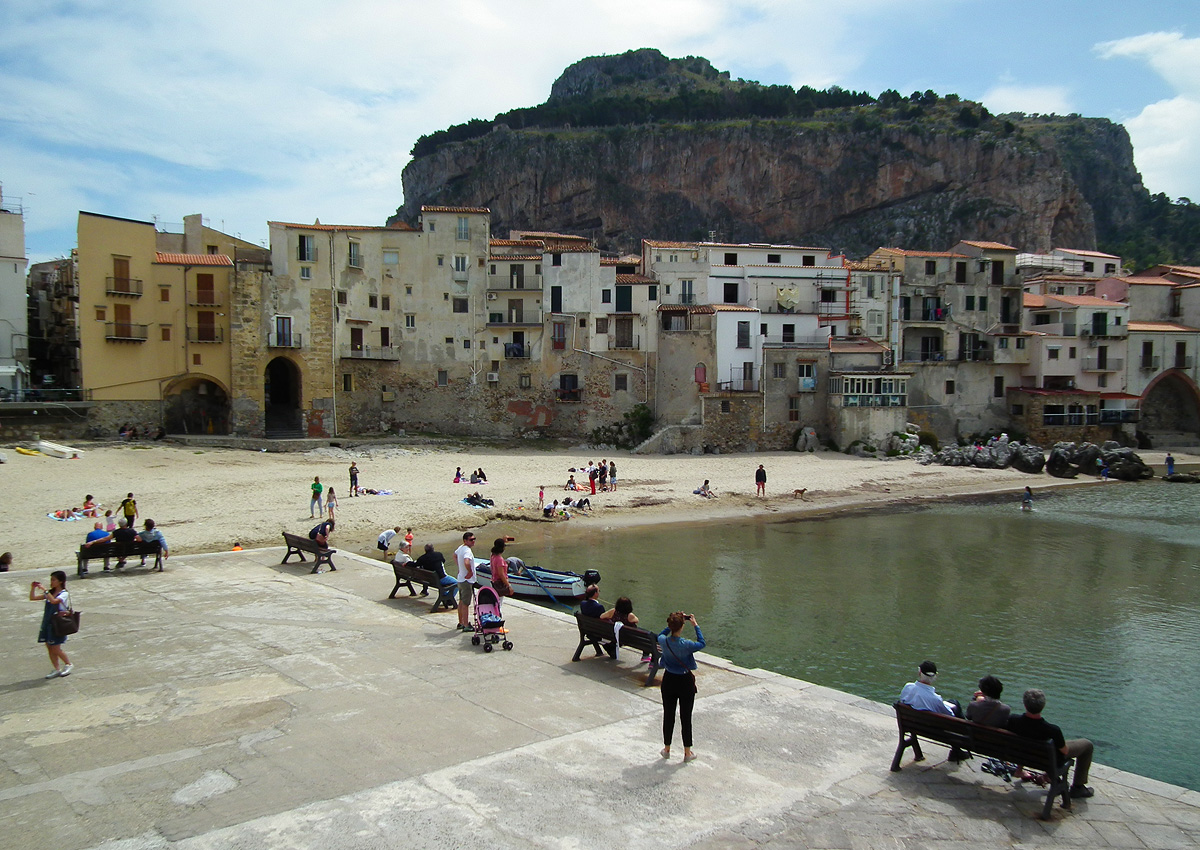 |
||
 |
||
 |
|||
| This is a view of the rocky headland, looking towards the West. Palermo is aobut 70 kms thataway!. | |||
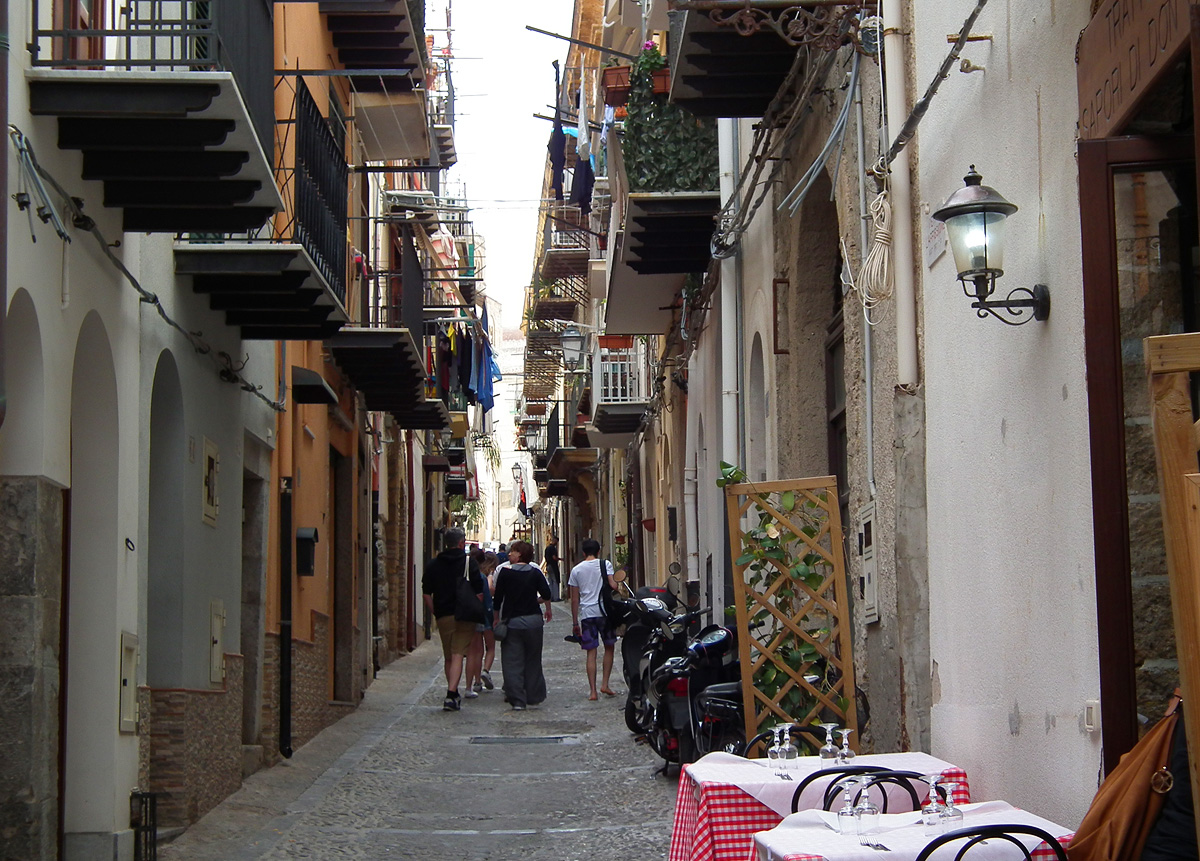 |
|||
| It is fun ambling along the narrow streets of the old part of Cefalu, a legacy of Roger II. | |||
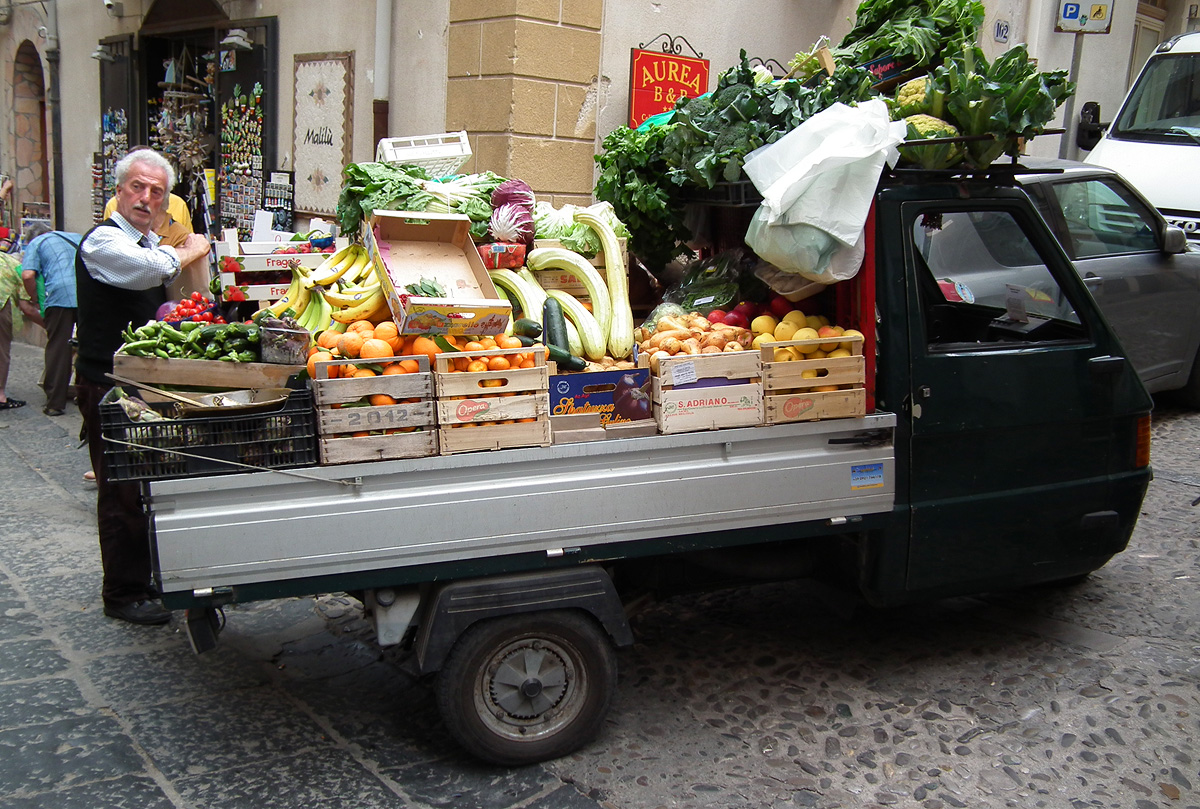 |
|||
| Here is a mobile grocery shop that comes to you!
I wonder how stable that 3 wheel mini-truck is, especially on the cobbled streets of Cefalu. |
|||
 |
|||
| This is the old public laundromat. | |||
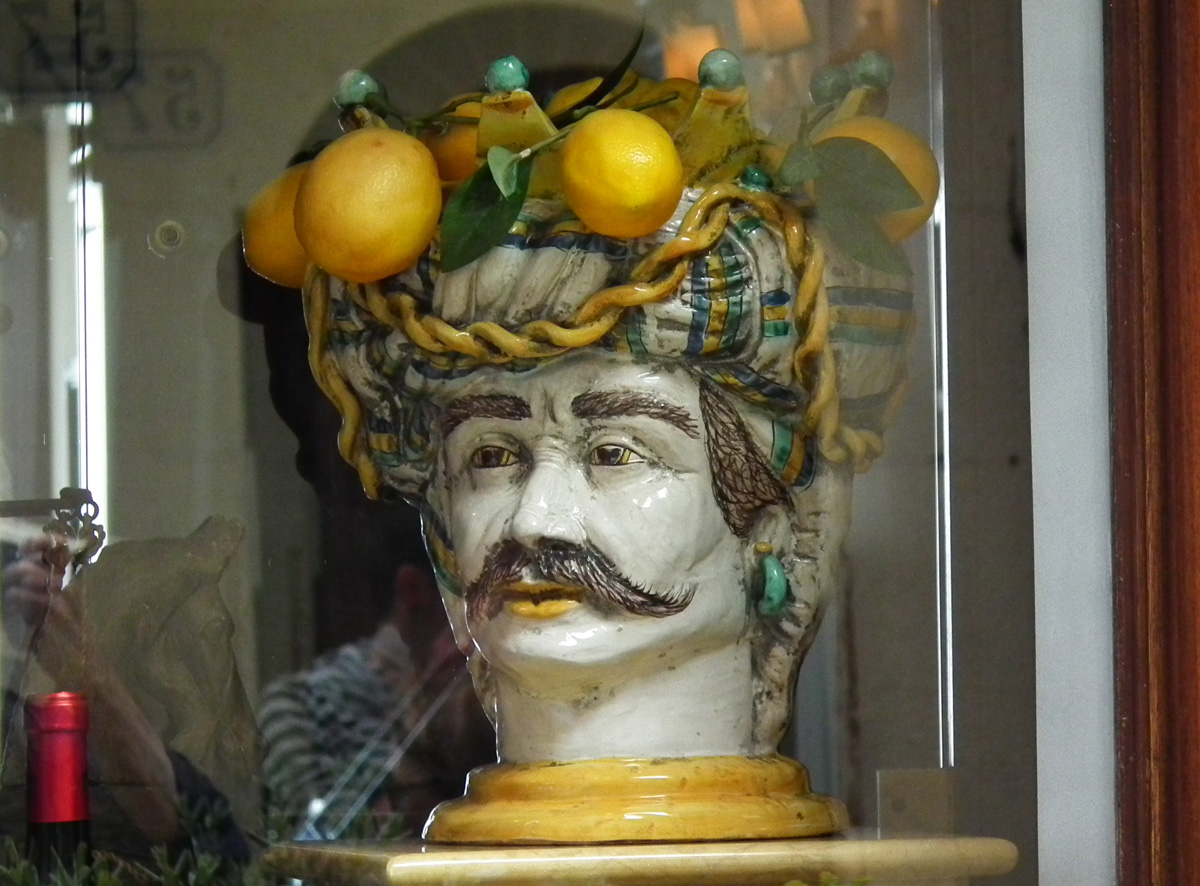 |
|||
| There appears to be a thriving ceramics industry in Sicily. This bust could be that of a swashbuckling Saracen pirate. | |||
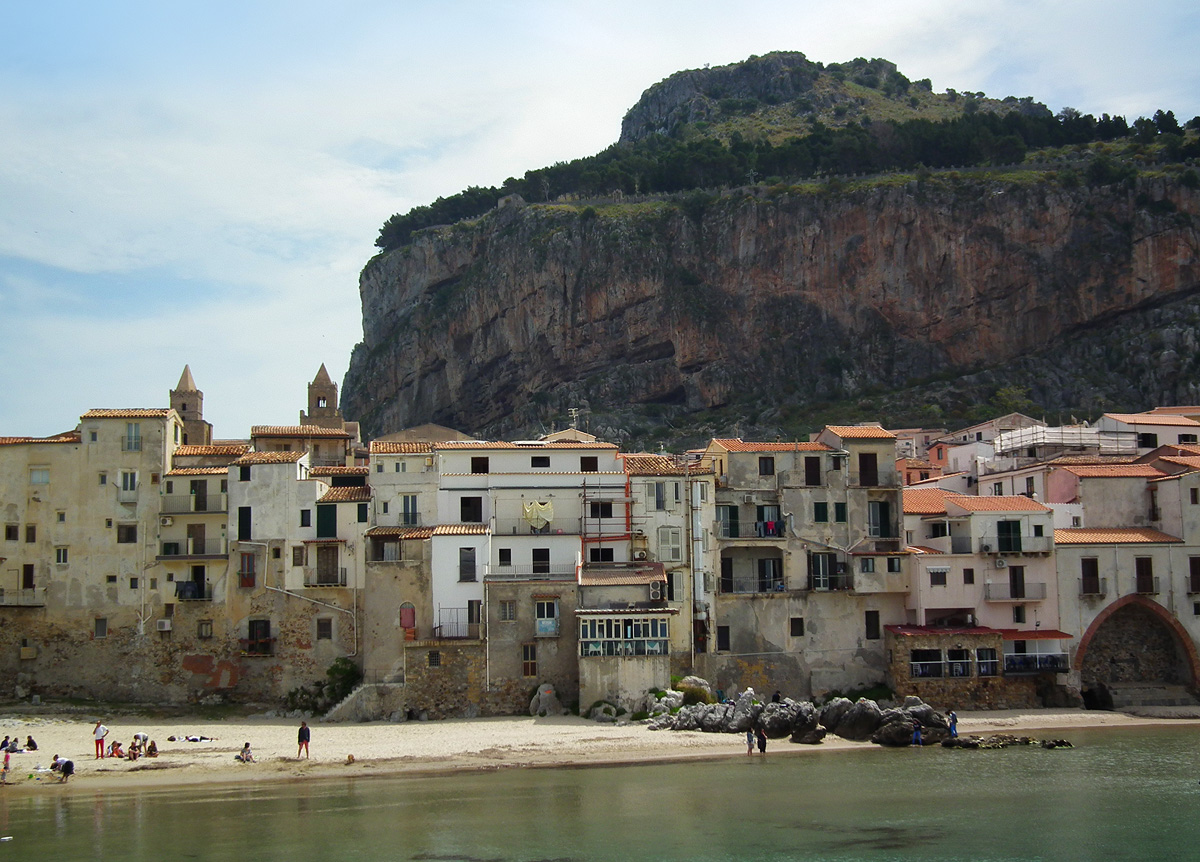 |
|||
| In this shot of La Rocca, you can see the twin Romanesque towers of the Cathedral of Cefalu on the left. | |||
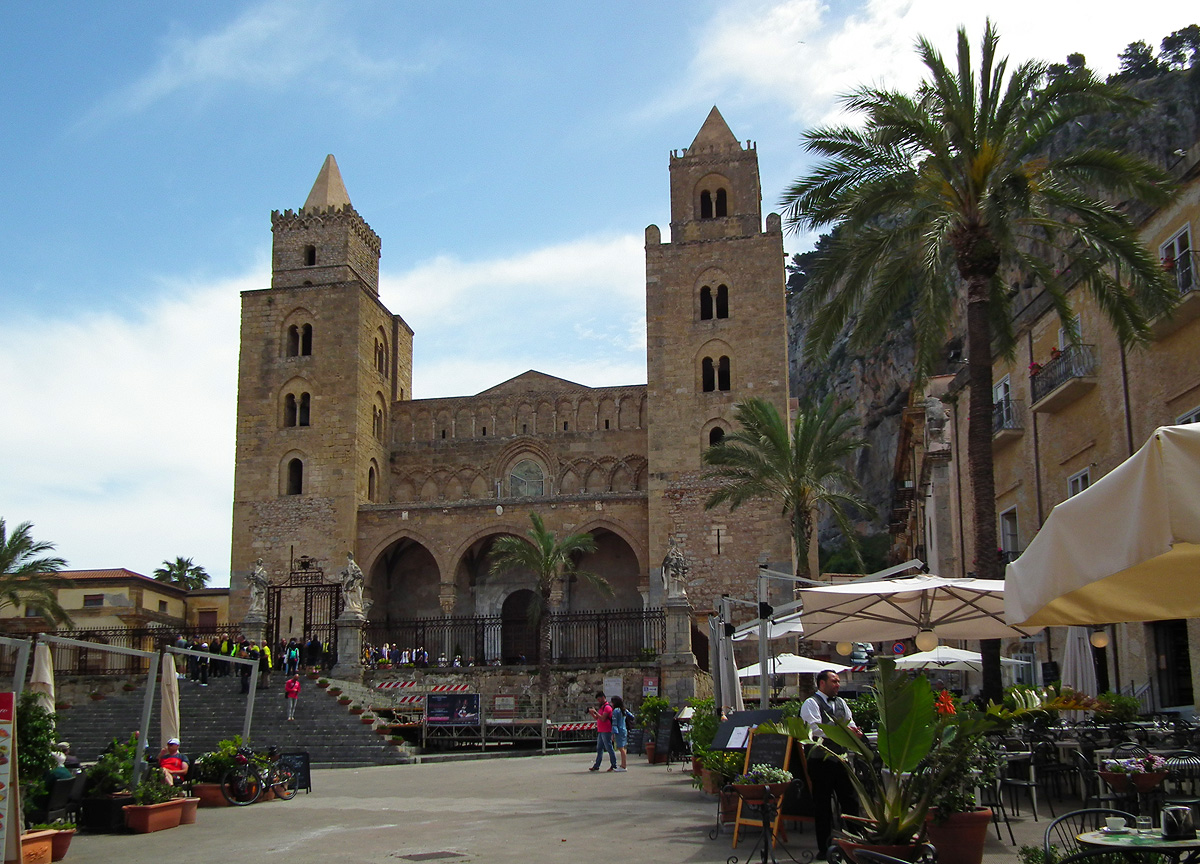 |
|||
| The Cathedral of Cefalu.
(I have seen references to the "Sicilian-Romanesque" style of the facade, perhaps referring to the basic Norman structure, embellished by Arab and Byzantine elements.) |
|||
 |
|||
| The apse of the Cathedral contains the only remains of the original decoration. The rest of the Cathedral is quite bare, but the quality of the images of the Christ Pantocrator and the Virgin and Saints makes it worthwhile to spend some time in the interior of the building.
I couldn't find out if the other decorations were somehow destroyed, or if the money had run out and left the Cathedral unfinished. |
|||
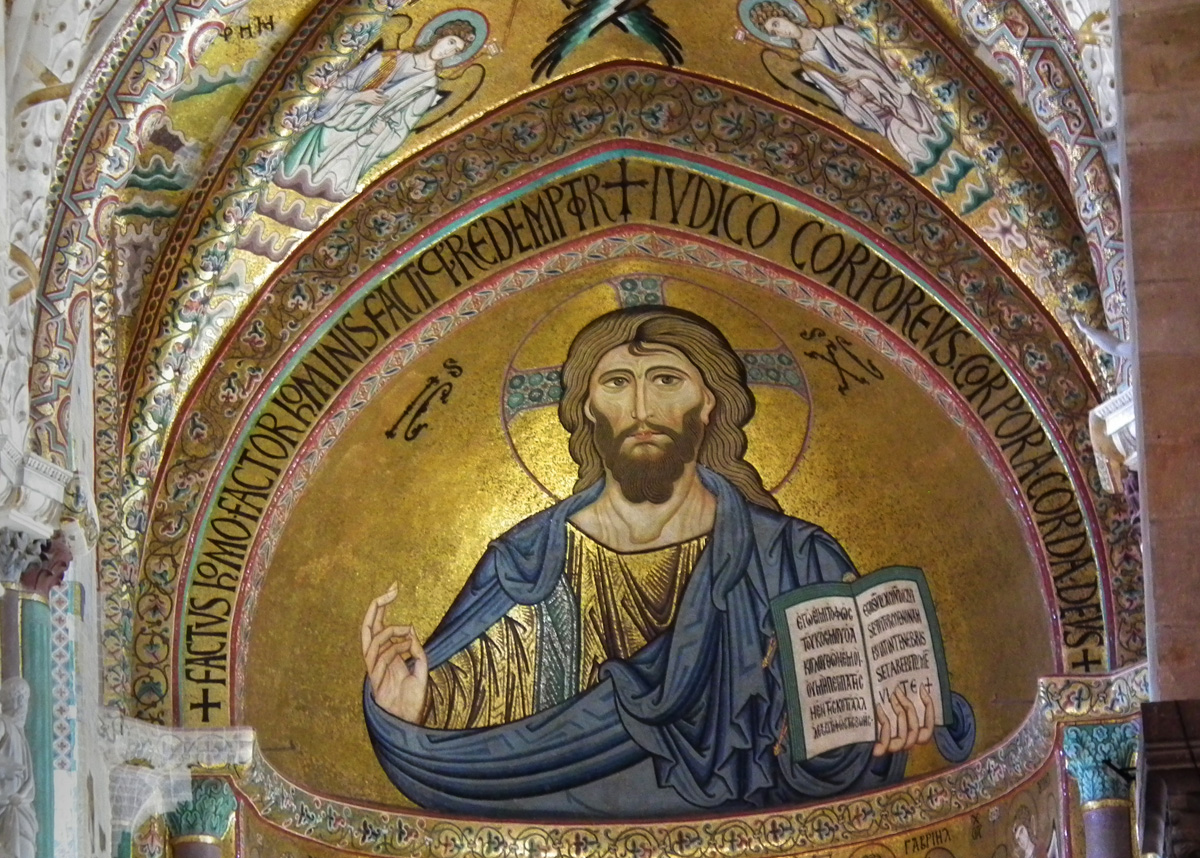 |
|||
| The Christ Pantocrator.
Wikipedia states: "The icon of Christ Pantokrator is one of the most common religious images of Orthodox Christianity. Generally speaking, in Medieval eastern roman church art and architecture, an iconic mosaic or fresco of Christ Pantokrator occupies the space in the central dome of the church, in the half-dome of the apse, or on the nave vault. Some scholars (Latourette 1975: 572) consider the Pantocrator a Christian adaptation of images of Zeus, such as the great statue of Zeus enthroned at Olympia. The development of the earliest stages of the icon from Roman Imperial imagery is easier to trace. |
|||
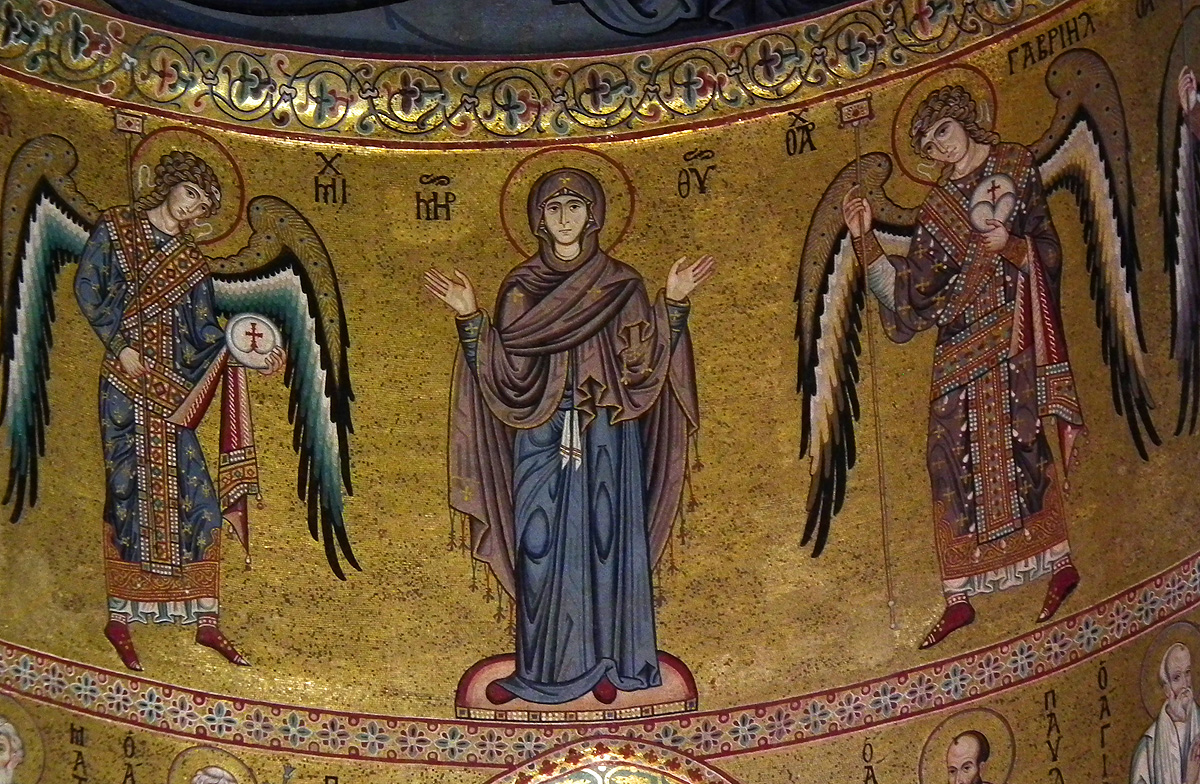 |
|||
| The VIrgin and Angels. | |||
 |
|||
| Three Saints with their names in Old Greek. I think the one on the left is Simon. The Saint in the middle could be Bartholomew. | |||
 |
|||
| You can see the bareness of the semi-transept on the right, compared to the classical marble decoration on the nave, close to the apse.
Thanks to Wikipedia, I have just learnt that the "transept" refers to the whole of the cross which is perpendicular to the nave. One wing alone is known as a semi-transept. You are never too old to learn new tricks. Yes, I have donated to Wikipedia as I have found it such a useful resource. |
|||
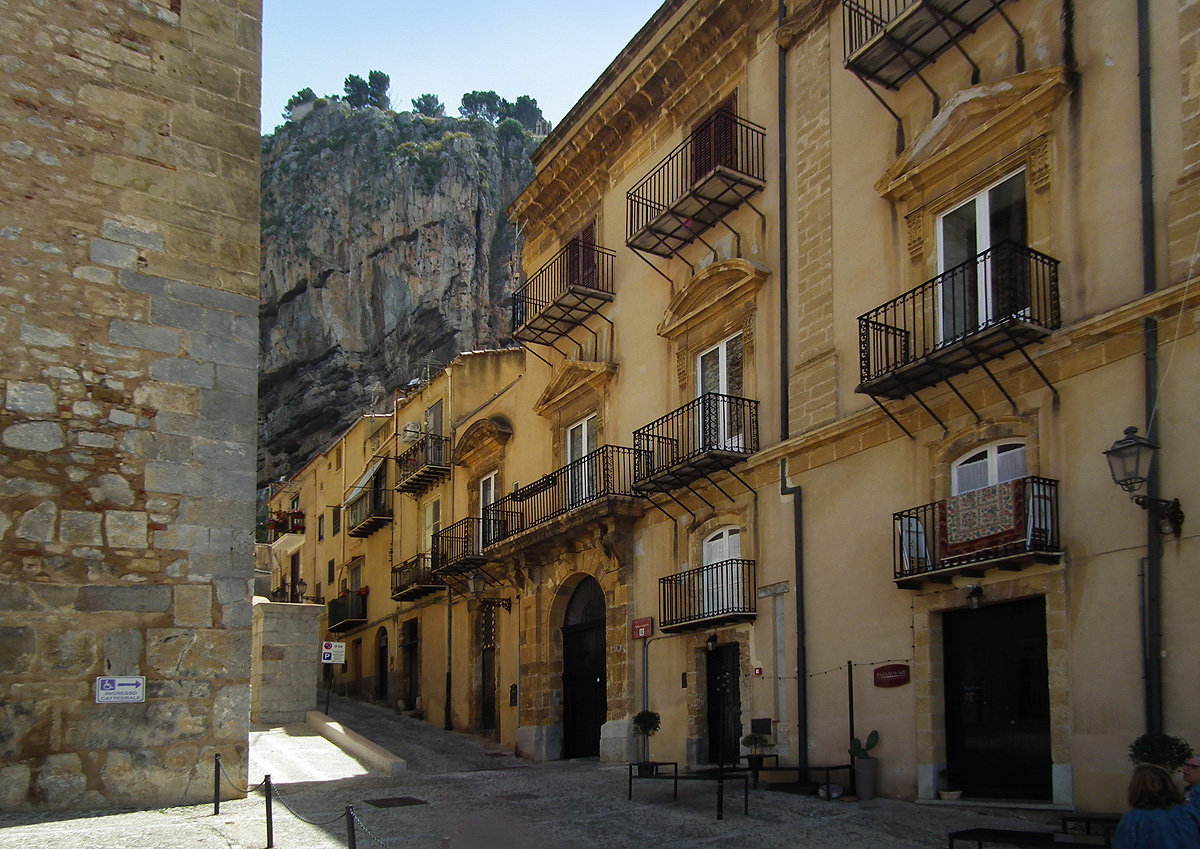 |
|||
| This road leading towards La Rocca runs along the Southern flank of the Cathedral. | |||
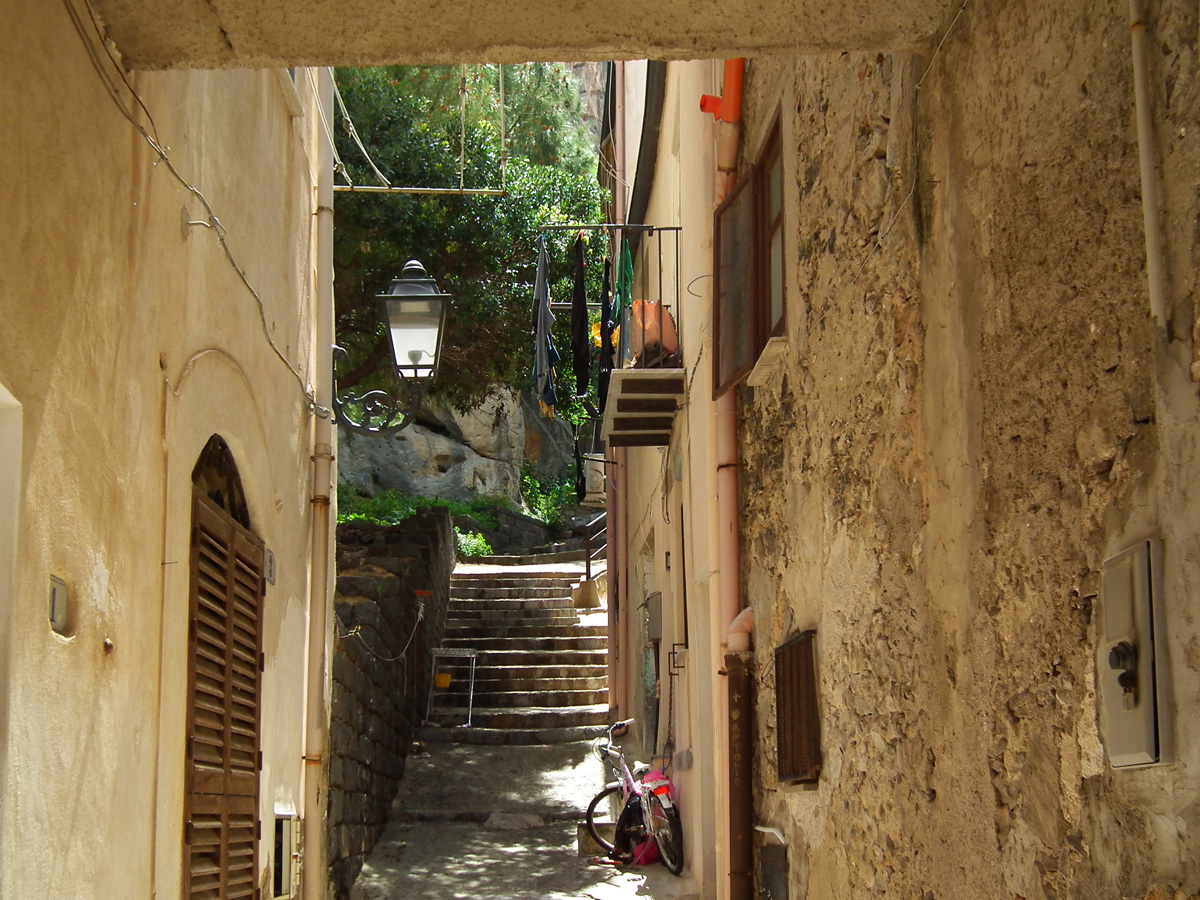 |
|||
| These steps took me to a path above the Old Town and just below the cliffs of La Rocca. | |||
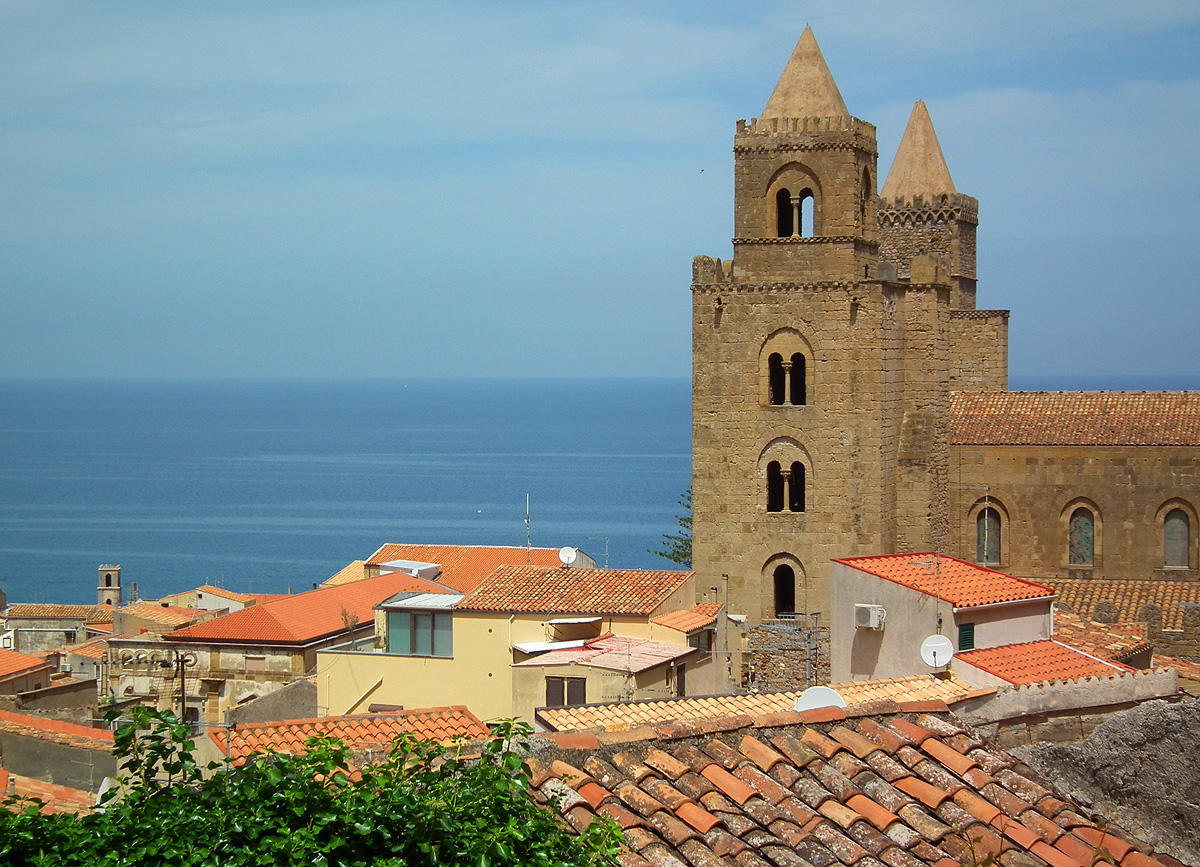 |
|||
| A view of the sea and the Norman towers of the Cathedral, seen from the path below the cliffs of La Rocca. | |||
 |
|||
| Looking up at La Rocca, we can see bits of the old fortifications and big clumps of cactii clinging onto the rock-face. A pigeon above La Rocca is frozen in time. | |||
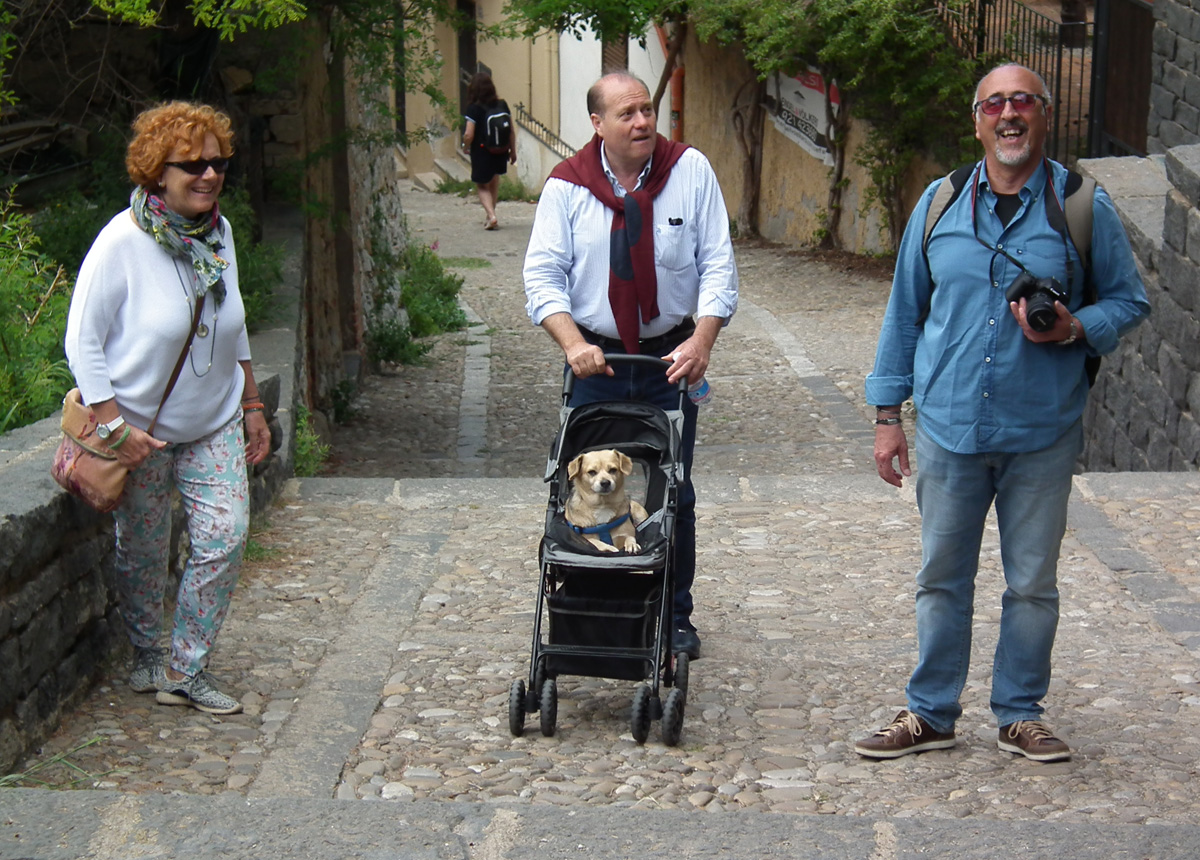 |
|||
| To misquote an ex-Prime Minister of Australia: "A dog's life was meant to be easy!"
(Yes, I did ask for their permission to take this photo.) |
|||
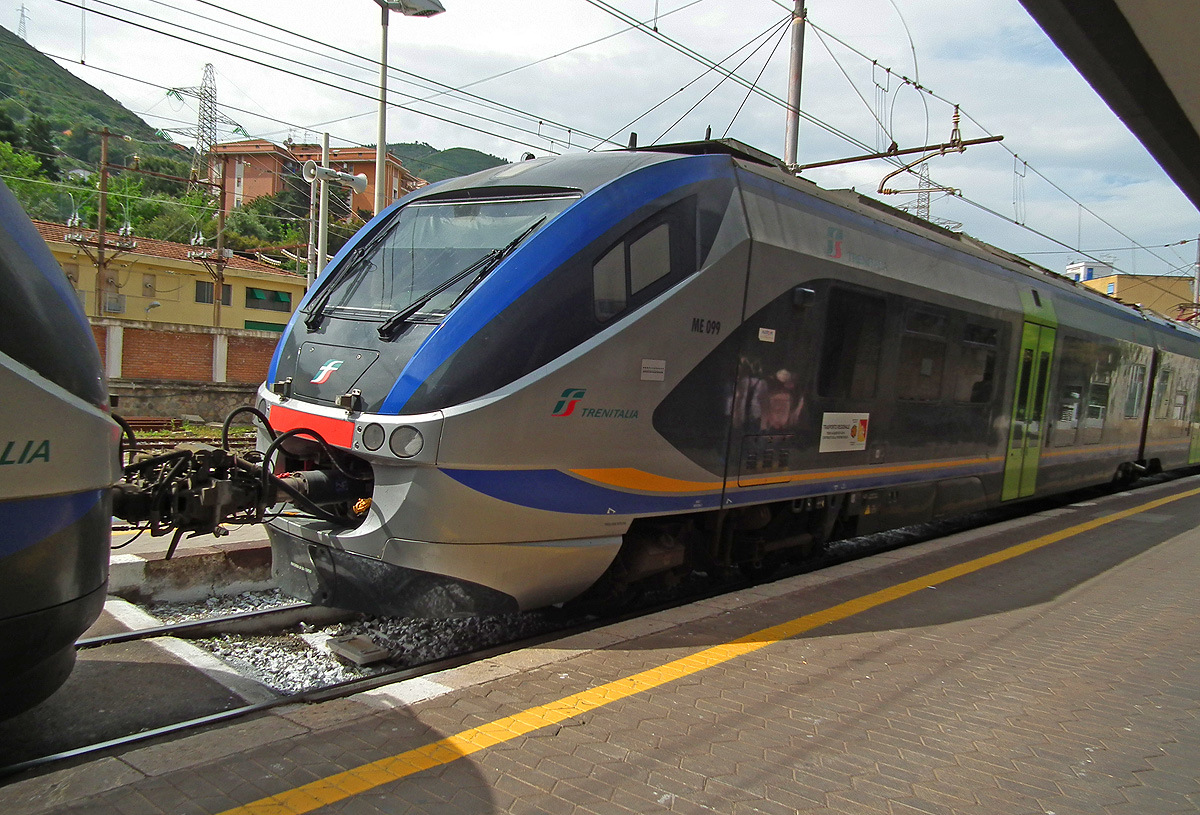 |
|||
| Finally, a word or two about train travel in Sicily.
Most of the time I found that the trains were only a few minutes late arriving at their destination. The public announcements on the train were mostly in both Italian and English, and were surprisingly clear to my ear. (After spending a year at the age of 19 working in the tunnels of the Snowy Mountain Hydroelectic Scheme, my hearing ain't all that good!) For long-distance trips (eg. Naples to Palermo or Siracusa to Rome) it certainly pays to travel by fast Intercity trains. These are more expensive than regular local trains and you must reserve your seat. Since these Intercity trains can get quite full, it pays to book online some time in advance (I met a few tourists in Italy who had discovered to their cost that certain trains they had hoped to catch were totally full). The photo above shows one of the regular local trains which was clean and comfortable. Some other local trains can be a little bit worn and weary, and are often covered in graffiti, but they will still get you to where you want to go. The regular local trains were remarkably cheap, per mile covered, and were often surprisingly fast. |
|||
|
To return to the Paintings section of this website, please CLICK HERE
|
|||